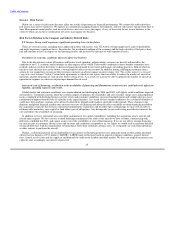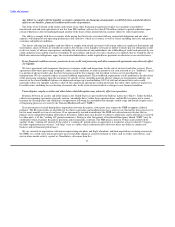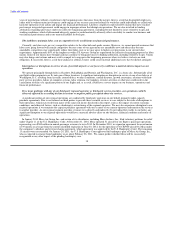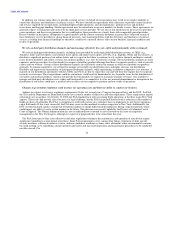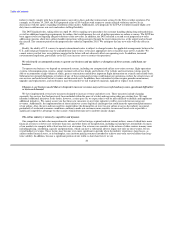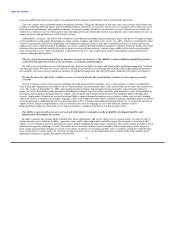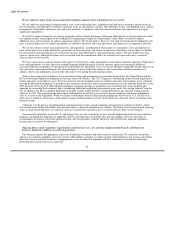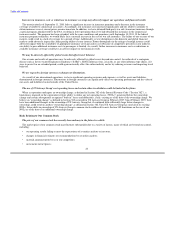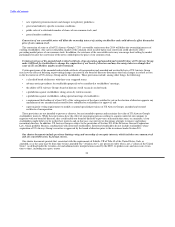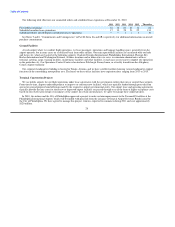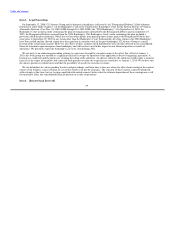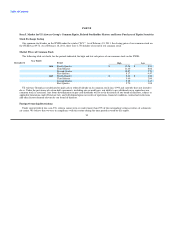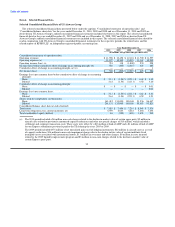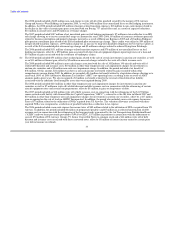US Airways 2010 Annual Report Download - page 24
Download and view the complete annual report
Please find page 24 of the 2010 US Airways annual report below. You can navigate through the pages in the report by either clicking on the pages listed below, or by using the keyword search tool below to find specific information within the annual report.
Table of Contents
database information. Furthermore, there has been heightened legislative and regulatory focus on data security in the U.S. and abroad
(particularly in the EU), including requirements for varying levels of customer notification in the event of a data breach.
Many of our commercial partners, including credit card companies, have imposed data security standards that we must meet. In
particular, we are required by the Payment Card Industry Security Standards Council, founded by the credit card companies, to comply
with their highest level of data security standards. While we continue our efforts to meet these standards, new and revised standards may
be imposed that may be difficult for us to meet and could increase our costs.
In addition to the Payment Card Industry Standards discussed above, failure to comply with the other privacy and data use and security
requirements of our partners or related laws and regulations to which we are subject may expose us to fines, sanctions or other penalties,
which could materially and adversely affect our results of operations and overall business. In addition, failure to address appropriately
these issues could also give rise to additional legal risks, which, in turn, could increase the size and number of litigation claims and
damages asserted or subject us to enforcement actions, fines and penalties and cause us to incur further related costs and expenses.
We are at risk of losses and adverse publicity stemming from any accident involving any of our aircraft or the aircraft of our
regional operators.
If one of our aircraft, an aircraft that is operated under our brand by one of our regional operators or an aircraft that is operated by an
airline that is one of our codeshare partners were to be involved in an accident, we could be exposed to significant tort liability. The
insurance we carry to cover damages arising from any future accidents may be inadequate. In the event that our insurance is not adequate,
we may be forced to bear substantial losses from an accident. In addition, any accident involving an aircraft that we operate, an aircraft
that is operated under our brand by one of our regional operators or an aircraft that is operated by an airline that is one of our codeshare
partners could create a public perception that our aircraft or those of our regional operators or codeshare partners are not safe or reliable,
which could harm our reputation, result in air travelers being reluctant to fly on our aircraft or those of our regional operators or
codeshare partners and adversely impact our financial condition and operations.
Delays in scheduled aircraft deliveries or other loss of anticipated fleet capacity may adversely impact our operations and financial
results.
The success of our business depends on, among other things, the ability to operate an optimum number and type of aircraft. In many
cases, the aircraft we intend to operate are not yet in our fleet, but we have contractual commitments to purchase or lease them. If for any
reason we were unable to accept or secure deliveries of new aircraft on contractually scheduled delivery dates, this could have a negative
impact on our business, operations and financial performance. Our failure to integrate newly purchased aircraft into our fleet as planned
might require us to seek extensions of the terms for some leased aircraft. Such unanticipated extensions may require us to operate existing
aircraft beyond the point at which it is economically optimal to retire them, resulting in increased maintenance costs. If new aircraft
orders are not filled on a timely basis, we could face higher monthly rental rates.
Our business is subject to weather factors and seasonal variations in airline travel, which cause our results to fluctuate.
Our operations are vulnerable to severe weather conditions in parts of our network that could disrupt service, create air traffic control
problems, decrease revenue and increase costs, such as during hurricane season in the Caribbean and Southeast United States, snow and
severe winter weather in the Northeast United States and thunderstorms in the Eastern United States. In addition, the air travel business
historically fluctuates on a seasonal basis. Due to the greater demand for air and leisure travel during the summer months, revenues in the
airline industry in the second and third quarters of the year tend to be greater than revenues in the first and fourth quarters of the year. Our
results of operations will likely reflect weather factors and seasonality, and therefore quarterly results are not necessarily indicative of
those for an entire year, and our prior results are not necessarily indicative of our future results.
23




